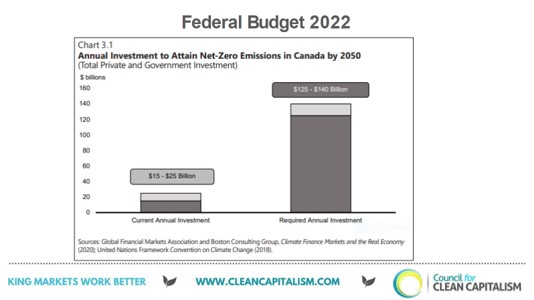Sustainable Procurement: Climate Action’s Best Kept Secret
Many organizations have woken up to the climate crisis and are implementing strategies to reduce their environmental impact. Clara Carriere, former Sustainability Program Manager at HP, explains how an organization’s supply chain, though often overlooked, is a key area of opportunity for the greatest impact.
If you think about it, where does an organization’s sustainability journey normally start?
Most would agree that organizations start by examining their operations in their sustainability journey. They install solar panels on their buildings and reduce the footprint of their employees’ commute by offering electric vehicles and work from home or hybrid work. These actions are important from an operational standpoint while also helping generate executive sponsorship and employee engagement around sustainability – all crucial elements to implementing a successful sustainability strategy.
However, organizations often miss the fact that a company’s supply chain is a hidden goldmine of environmental opportunity, and opportunities to meet the other Sustainable Development Goals (SDG). With the gap in investment needed to get Canada to net zero at 125+ billion, this makes the trillions in procurement spent by organizations a critical tool to leverage for driving climate action at scale.

In fact, an organization’s supply chain can generate up to 11.4x more emissions than a company’s direct operations. This means that without reporting and reducing Scope 3 downstream emissions, the road to net zero is quite near impossible.
“This chain of environmental risk is not just an opportunity to look beyond companies’ own emissions and cascade their ambition; it is now the only way to leverage change at the scale required.”
CDP’s Global Supply Chain Report
The need for organizations to examine their supply chains for the most “bang for their buck” from a sustainability standpoint coupled with the fact that customers are looking to purchase from sustainable companies, provides a compelling case for sustainable procurement. Customers are increasingly considering sustainable criteria when purchasing, a trend that we have seen grow both in the consumer and commercial B2B space. For example, in 2021 HP tracked over 3.5 billion in sustainability-influenced sales including customer requests for eco-labelled products, energy-efficient products, and overall company sustainability performance.
It is not only customers looking at an organization’s sustainability practices; employees and investors are applying pressure. According to the Principles for Responsible Investment, 89% of listed equity asset owners incorporated ESG issues in their selection, appointment, and monitoring practices. We know employees also think it is important, with 93% of employees believing that companies must lead with purpose. This is especially top of mind for Gen Z and Millennials who are quickly taking over a large share of the workforce.
Recently, through HP’s Amplify Impact program, HP has started to work with our global channel partners to drive sustainability-influenced sales while also helping them implement sustainable IT procurement practices themselves. We offer our 3,500+ partners a Sustainable IT Procurement initiative which includes a free IT procurement self-assessment, as well as industry-leading sustainable purchasing training, tools, and resources.
However, it is clear that not only do we have to support partners to implement their own sustainable procurement practices; we also need to help them derive business and a competitive advantage from it, which is key to their long-term investment in sustainability. We help partners capture sustainability business opportunities by working with their customers to integrate sustainability purchasing criteria in the RFP and bid process. Partners in turn report their sustainability-influenced sales deals to HP, with over 6000 sales deals reported in less than 8 months in 2022.

Implementing meaningful sustainable purchasing practices comes with some key challenges. Barriers to drive sustainable procurement practices include a lack of:
- Clear internal mandates to leverage sustainable procurement to meet broader sustainability goals
- Knowledge
- Time and capacity
- Senior leader support
These barriers are highlighted in the Buying a Better Future report, a recommended read for anyone looking to learn about the systems, success factors, and key insights to implementing a successful sustainable procurement strategy. Building greener and more resilient supply chains is not without its challenges but doing so will help companies drive additional revenue and mitigate risks in their supply chains.
We have a long way to go in changing the way that we buy to drive meaningful climate action, but there are helpful resources available for businesses trying to green their organizations:
- HP’s Sustainable IT Purchasing Guide (IT sector specific)
- Sustainable Purchasing Leadership Council
- Circular Innovation Council
- Buying a Better Future Report and website
- WWF Canada & HP Buying Responsibly Guide
Overall, for companies wanting to help address climate change and drive additional business, aligning their buying practices with their sustainability values is where the real opportunity for change lies.














